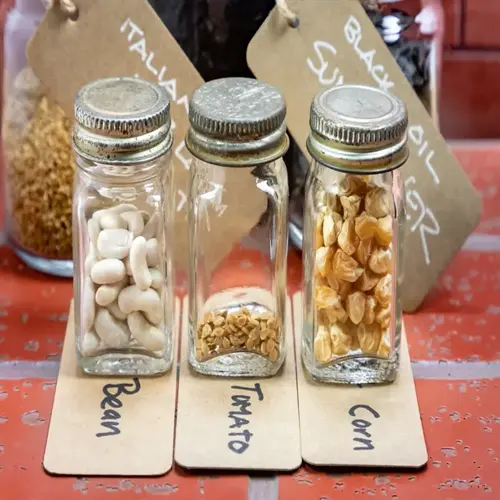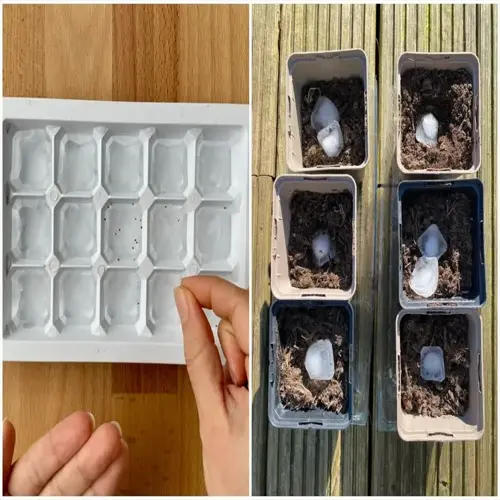How to Treat Mealybugs: 10 Proven Methods

Written by
Kiana Okafor
Reviewed by
Prof. Martin Thorne, Ph.D.The first step to addressing mealybugs is to spot the small white cottony clusters early on.
A 70% alcohol swab will work for a localized treatment and will not harm most plants.
Neem oil sprays are effective to break the feeding and reproduction cycle of mealybugs and this treatment should be repeated once a week.
Release ladybugs as natural predators if you are dealing with mealybugs outside and want to control them without using chemicals.
In extreme cases when you have a large infestation you can resort to using systemic insecticides but you must carefully follow safety protocols.
Afterwards, you can avoid a repeat infestation by checking plants regularly and avoiding over-fertilization.
Article Navigation
To learn how to treat measly bugs began with identifying them. Mealybugs are soft-bodied insects covered by a white, cottony coating. They hide in joints of plants and underneath leaves. When gardening, it may be possible to spot mealybugs as fuzzy areas on your beloved plants.
These insects pose a danger to plants by extracting sap from stems and leaves. This feeding causes plants to weaken, turn yellow, or wilt. Common targets include succulents, citrus, and houseplants. I lost a valuable jade plant before I could recognize its signs.
Taking early action is valuable for protecting your plants. Check new plants before adding them to your indoor plant collection. Check the undersides of leaves weekly for white clusters. If you catch pests early, you won't need to implement drastic measures to ward off the invasion.
Understanding Mealybugs
Mealybugs are small, soft-bodied insects that are often coated with white cottony wax. This wax coating will enable them to resist water and pesticides. You will find them congregated in the crevices of plants. They can range in size from the size of a pinhead to that of a grain of rice.
Their life cycle is short from eggs to adults, usually lasting 7 to 14 days. Females deposit many hundreds of eggs in fluffy masses. Newly hatched nymphs crawl off quickly to find new feeding sites. This rapid reproduction can cause them to appear as an infestation.
Mealybugs are often found in leaf axils, stem nodes, and, surprisingly, root systems. They favor concealed areas away from direct light. Root mealybugs feed on the plant from below the soil surface. I have previously discovered them in the ungroomed bottom of pots.
Different types of mealybugs attack various plant species. Citrus mealybugs are parasitic on multiple fruit trees, while long-tailed mealybugs are found on ornamentals. It is essential to identify the species, as the treatment for the mealybug varies. Identify the plant before the potential treatment options.
Physical Features
- Small oval insects measuring 1/10 to 1/4 inch long
- Covered in protective white powdery wax secretion
- Pink bodies visible under cottony coating when disturbed
- Distinct from scale insects due to retained mobility
Reproduction Cycle
- Females lay 300-600 eggs in cottony masses near stems
- Eggs hatch into crawlers within 6-10 days
- Nymphs mature faster in warmer temperatures above 75°F (24°C)
- Some species bear live young instead of laying eggs
Feeding Behavior
- Sap-sucking insects that target new plant growth
- Pierce plant tissue to extract nutrient-rich fluids
- Excrete sticky honeydew that promotes sooty mold growth
- Inject toxins causing leaf yellowing and deformation
Geographic Spread
- Found worldwide with concentration in warm temperate regions
- Over 300 species identified in North America alone
- Greenhouses enable survival in colder northern climates
- Major agricultural pests in tropical fruit-growing regions
Seasonal Activity
- Peak infestations occur during warm summer months
- Indoor populations thrive year-round in stable home environments
- Egg production increases with higher humidity levels
- Dormancy observed below 60°F (16°C) in winter months
Signs of Infestation
Finding cottony white clusters on plant stems or leaf joints indicates the presence of mealybugs on the plant. These fluffy areas serve as a protective covering for mealybug eggs and insects. Wherever sap flow occurs, mealybugs are attracted to that new growth. Check it very closely! I didn't realize until it was too late, and lost an entire collection of coleus.
Check for sticky honeydew residues on leaves and adjacent surfaces. This clear fluid is excreted by feeding insects. It rapidly grows black sooty mold that blocks light. Ants often tend to this sugary liquid, exacerbating the problem.
Unexplained leaf wilt or yellowing is often an indication of root mealybugs, which are usually hidden in the soil. These pests feed on plants below the soil surface. When repotting plants, inspect the roots for signs of white masses. Plants will exhibit deterioration without visible signs above ground until the damage is too great.
Stunted growth and abnormal new leaves are additional indications. As the infestation escalates, premature leaf drop occurs. Examine your plant if it suddenly drops buds or fruits, as this may indicate the presence of cottony egg masses in hidden crevices.
Visible Insects
- White cottony masses on stems, leaf axils, and undersides
- Pinkish insects visible when wax coating is disturbed
- Clusters around new growth where sap is most abundant
- Mobile nymphs crawling to new feeding locations
Honeydew Residue
- Sticky clear substance coating leaves and nearby surfaces
- Attracts ants that farm mealybugs for sugary secretions
- Promotes growth of black sooty mold fungus on plants
- Creates shiny patches on foliage and surrounding areas
Plant Damage
- Yellowing leaves starting from infestation sites upward
- Stunted growth and deformed new plant development
- Premature dropping of leaves, buds, and fruits
- Wilting despite adequate watering in severe cases
Root Symptoms
- White cottony patches on root balls when unpotted
- Visible insects in soil drainage holes of containers
- Reduced flowering and blooming in affected plants
- General plant decline without obvious above-ground signs
Secondary Issues
- Black sooty mold growing on honeydew-coated surfaces
- Ant trails leading to and from infested plants
- Increased susceptibility to other pests and diseases
- Sticky floors or surfaces beneath infected plants
Preventing Infestations
Always inspect new plants well before introducing them to your home. Check all leaf undersides and stem joints for white specks. Quarantine new plants for two weeks to prevent contamination from other plants. I learned this from the mealybugs that infested my greenhouse plants.
Limit the nitrogen fertilizing to reduce soft new growth that attracts pest insects. Mealybugs are especially drawn to tender shoots with high sap content. Consider using balanced fertilizers instead. Plants that are fertilized excessively can become a food source for these insects. Maintain moderate fertilization levels and avoid excessive feeding schedules.
Keep nighttime temps cooler, around 60F to slow mealybug reproduction. They like constant warm temperatures. Open windows or lower the thermostat setting after dark. My citrus plants have been pest-free since I made this adjustment.
Instill helpful insects such as ladybugs as a natural deterrent. These predators will manage early infestations before they spread. Plant nectar-producing flowers to attract them. They are a natural security system against damage caused by pests.
Ensure regular sanitation of tools and surfaces of plants. Wipe down leaves with a cloth, monthly, to remove dust and eggs. Sterilize pruning shears with alcohol between uses on different plants. Good hygiene can prevent many situations before they occur.
Plant Inspection
- Examine all new plants thoroughly before bringing indoors
- Check leaf undersides and stem joints for cottony masses
- Quarantine new additions for two weeks before introducing
- Use magnifying glass to spot early nymph stages
Cultural Controls
- Avoid overwatering and over-fertilizing with nitrogen
- Prune regularly to improve air circulation through plants
- Clean gardening tools with alcohol between plant uses
- Remove plant debris where mealybugs might overwinter
Environmental Management
- Maintain nighttime temperatures around 60°F (16°C)
- Use oscillating fans to create air movement indoors
- Wipe leaves monthly to remove dust and potential pests
- Position plants to avoid overcrowding and poor ventilation
Biological Controls
- Introduce ladybugs and lacewings as natural predators
- Avoid broad-spectrum pesticides that kill beneficial insects
- Plant nectar-rich flowers to attract predatory insects
- Use Cryptolaemus montrouzieri beetles for greenhouse control
Preventive Treatments
- Apply neem oil spray monthly as a preventative measure
- Use insecticidal soap sprays during high-risk seasons
- Add systemic insecticide granules to potting soil initially
- Implement sticky traps to monitor for flying mealybugs
10 Proven Treatment Methods
Use the least invasive option first, strong water sprays. Spraying plants every three days with water from above, targeting the undersides of leaves, will knock off the nymphs without the use of chemicals. Always test the water pressure by spraying it on one leaf to determine if it will damage plants. In practice, cooler temperatures will allow for reduced applications.
For local treatment, use 70% isopropyl alcohol on cotton swabs. Place directly on insects weekly, keeping it off the roots. Wear gloves. Best for small infestations. Warmer room temps result in quicker applications.
Use insecticidal soap, created by mixing 1 teaspoon of dish soap in a gallon of water. Spray the whole plant bi-weekly, rinsing it later after four hours. Avoid doing this in the hot midday sun, as it can otherwise damage treated leaves. Neem oil solutions require 2 tablespoons of oil plus soap in water.
Add beneficial insects such as ladybugs into the mix for ongoing control. Release them near the infested plants just once. Provide available water sources. Please refrain from using any chemical sprays in advance of introducing them. Garlic spray requires blending fresh garlic and cayenne pepper.
In more severe situations, systemic insecticides are a viable last resort. Be sure to follow the measurements on the label exactly. Use as a soil drench every thirty days. Try to stay away from edibles and pollinators. Be sure to wear protective gloves and masks whenever handling.
Handling Severe Infestations
Assess plant salvageability by observing foliage loss. Discard any plants exhibiting over 90% leaf loss or fungal infections, and isolate them immediately to prevent the spread to other plants. I salvaged a Monstera by detecting root mealybugs early in the repotting process. If the roots are healthy, it is possible.
Conduct a root-ball inspection, by taking plants out of the pots. Clean the root system in running water to expose any resident insects. Trim away damaged roots utilizing sterilized shears. Identify any white cottony masses clinging to the root hairs. This indicates the degree of infestation that is not otherwise visible above the soil surface.
Exchange contaminated soil with a completely new sterile mix. Use a 10% bleach solution to disinfect pots before reuse. New soil should contain insecticidal granules. Lightly water after repotting. This kills any eggs, larvae, and other pests that may be lurking in the old potting medium.
Use a soil drench of a systemic insecticide such as imidacloprid. Apply the label rates precisely, keeping the product away from edible plants and pollinators. Wear gloves and a face mask when applying these products. Reapply every month if you continue to see the pests. Systemic insecticides penetrate the plant's tissues and become internalized.
In difficult cases, use water-alcohol treatment in combination with neem treatments (within a week). Alternate every week with a neem spray one week and an alcohol wipe the next week. Reintroduce ladybugs after a chemical treatment. Discard destroyed plants in sealed plastic bags. Disinfect the surrounding areas with alcohol. Persistence will win against severe infestations.
Root-Ball Inspection
- Remove plant from pot and examine root system thoroughly
- Identify white cottony masses or insects on roots
- Rinse roots under running water to dislodge pests
- Trim damaged roots with sterilized pruning shears
Soil Replacement
- Discard all old soil to eliminate eggs and larvae
- Disinfect pot with 10% bleach solution before reuse
- Repot using fresh sterile potting mix with insecticidal granules
- Water lightly to settle soil without over-saturating
Systemic Insecticide Use
- Apply imidacloprid soil drench per label measurements
- Avoid use on edible plants or near pollinator habitats
- Wear gloves and mask during application for protection
- Reapply every 30 days if infestation persists
Combination Treatments
- Alternate between neem oil and insecticidal soap weekly
- Combine root drench with foliar spray applications
- Use alcohol swabs for spot treatment between sprays
- Introduce predatory insects after chemical treatments
When to Discard Plants
- Remove plants with over 90% foliage damage
- Destroy plants infected with secondary fungal diseases
- Isolate immediately to prevent spread to other plants
- Sterilize surrounding area with alcohol solution
5 Common Myths
Alcohol treatment harmfully damages all plants and should be avoided.
While 100% alcohol can cause harm to sensitive plants, you should always test a small area of leaf and, if the plant appears fine, use 70% isopropyl alcohol every time, applied with a cotton swab away from the root zone and in moderation.
Mealybugs only infest weak or unhealthy plants.
Mealybugs show a preference for weak and stressed plants, but they will go after actively growing plants as well, especially if the plant has succulent new growth like on a citrus or jade plant. In general, my impression is that mealybugs are extracted by the nitrogen in the sap regardless of the overall health of your plant.
One treatment can eliminate mealybugs wholly and indefinitely.
Overlapping life cycles and unobserved eggs necessitate repeated applications at 5- to 7-day intervals for a minimum of three weeks in order to break the cycle of reproduction and kill newly hatched nymphs.
Any white cottony bugs on your plants are mealybugs that will need the same treatment.
There are other pests that resemble mealybugs, such as woolly aphids or planthoppers. However, mealybugs and woolly aphids are very different insects with different life cycles; therefore, they require different approaches. Proper identification ensures that we are using the appropriate treatment on the pest and not causing unnecessary stress to the plant!
Outdoor plants do not fall victim to mealybug infestations in the same way that indoor houseplants do.
Mealybugs are common in greenhouses, sheltered outdoor areas, and spread via contaminated tools, the wind, or ants. Citrus and roses generally attract outdoor infestations, thus the need for consistent vigilance with outdoor plants.
Conclusion
Your best defense is to conduct weekly plant inspections for early detection and remove those pesky white clusters before they get out of hand. I actually saved my orchid collection because I found mealybugs on my normal weekly inspection. Make this routine part of your plant-care regimen, along with fertilization and watering, today!
Use multiple strategies for successful control. Use sprays of water in conjunction with biological controls, such as ladybugs (Harmonia axyridis). Rotate treatments to reduce the chance of resistance. This integrated multi-strategy plan resolved my greenhouse infestation. You will want to ensure there are no single approaches that work forever on persistent pests.
Persistence prevails over mealybugs. Continue the treatments for a minimum of three weeks. The eggs hatch in cycles, meaning continual treatment is required. My first battle took me five weeks, and I learned that persistence is key! Don't give up on the bug until you have seen some sign of improvement.
Please share your success stories below. Please let us know which methods worked for your plants. Your experiences help other gardeners. I learned my best root-wash technique from a reader's comment. Please let me know in the comments if you'd like to collaborate on building community resources together.
External Sources
Frequently Asked Questions
What's the fastest method to eliminate mealybugs?
Combining manual removal with 70% alcohol swabs and neem oil sprays provides the quickest control. Target visible insects directly with cotton swabs dipped in alcohol, then spray entire plants weekly with neem solution to disrupt their life cycle effectively.
Can Dawn dish soap kill mealybugs effectively?
Yes, when mixed properly: combine 1 teaspoon Dawn per gallon of water. The soap breaks down their protective wax coating, causing dehydration. Apply every 5-7 days, rinsing after 4 hours to prevent plant damage. Test on small areas first.
Where do mealybugs typically hide their eggs?
Females deposit cottony egg masses in protected areas:
- Leaf-stem joints and branch axils
- Undersides of leaves near veins
- Soil crevices near plant bases
- Root systems during severe infestations
Is touching mealybugs harmful to humans?
No direct health risk exists, but their sticky honeydew residue can transfer sooty mold spores to skin. Always wear gloves during handling to avoid potential irritation and prevent spreading pests to other plants accidentally.
What homemade spray works best against mealybugs?
Garlic-pepper spray: blend 1 minced garlic bulb, 1 chopped onion, 1 tsp cayenne, and 1 quart water. Strain, add 1 tsp soap, and spray. The compounds disrupt feeding while soap suffocates insects. Reapply after rain.
How do I recognize a severe mealybug infestation?
Critical signs include:
- Cottony masses covering stems and leaf joints
- Honeydew dripping onto surfaces below plants
- Yellowing leaves and stunted new growth
- Ant trails farming the insects
- Root clusters visible during repotting
Should I discard plants with mealybug infestations?
Only discard if over 90% foliage is damaged or secondary infections exist. Most plants recover with systemic insecticides and root washing. Isolate immediately and treat aggressively for 3 weeks before considering disposal to protect nearby plants.
Do mealybugs inhabit plant roots?
Yes, root mealybugs specifically target root systems. They appear as white deposits on roots when unpotted, causing unexplained wilting. Treat by rinsing roots and applying insecticidal granules to fresh soil during repotting.
What pests resemble mealybugs?
Common look-alikes include:
- Woolly aphids on outdoor trees
- Cottony cushion scales on citrus
- Planococcus citri mealybugs on houseplants
- Root aphids in soil systems
When are mealybugs most active?
Peak activity occurs during warm months above 75°F. Indoor populations thrive year-round in stable environments. Eggs hatch fastest in high humidity, making greenhouses and tropical climates particularly vulnerable to rapid infestations during summer.

